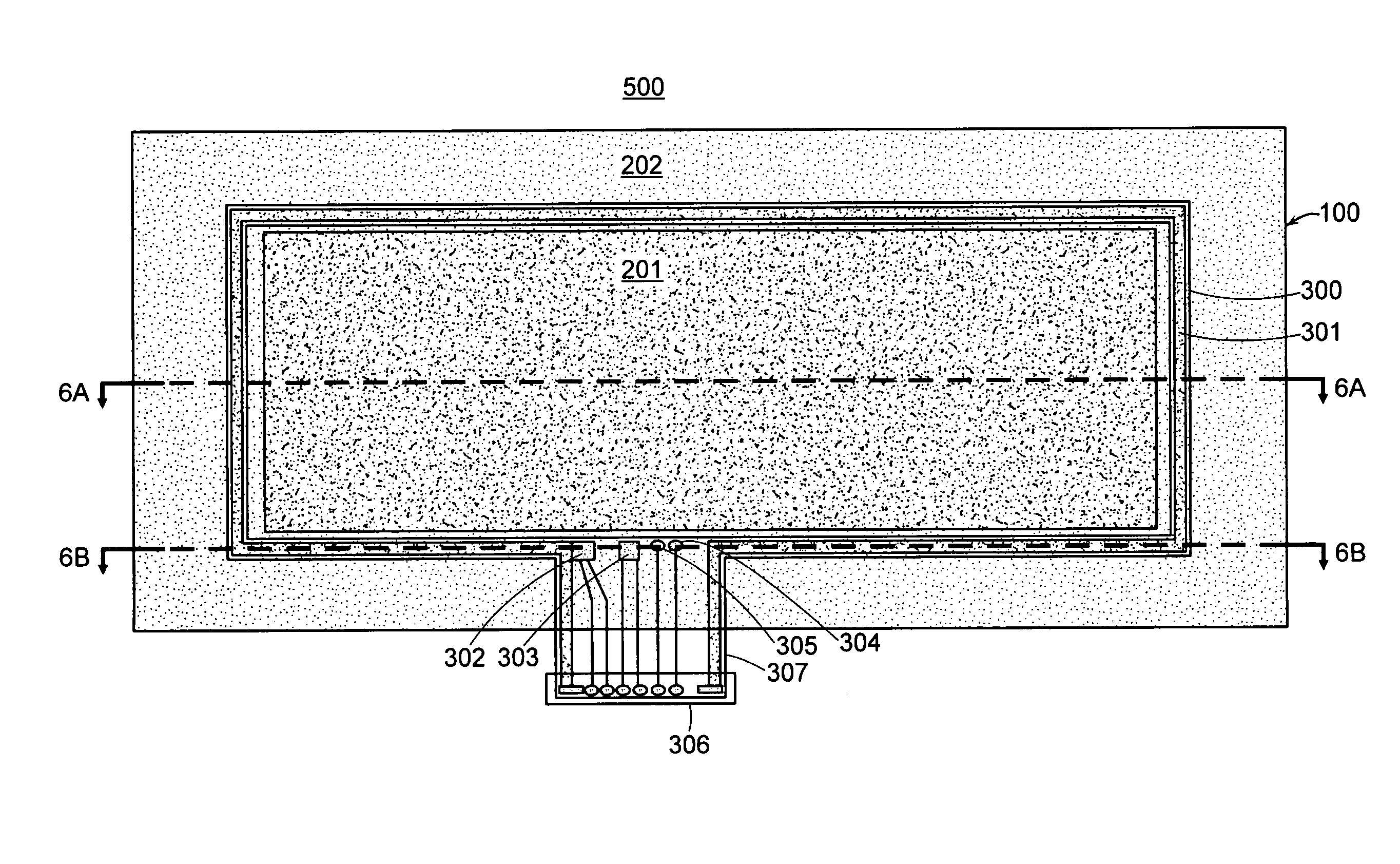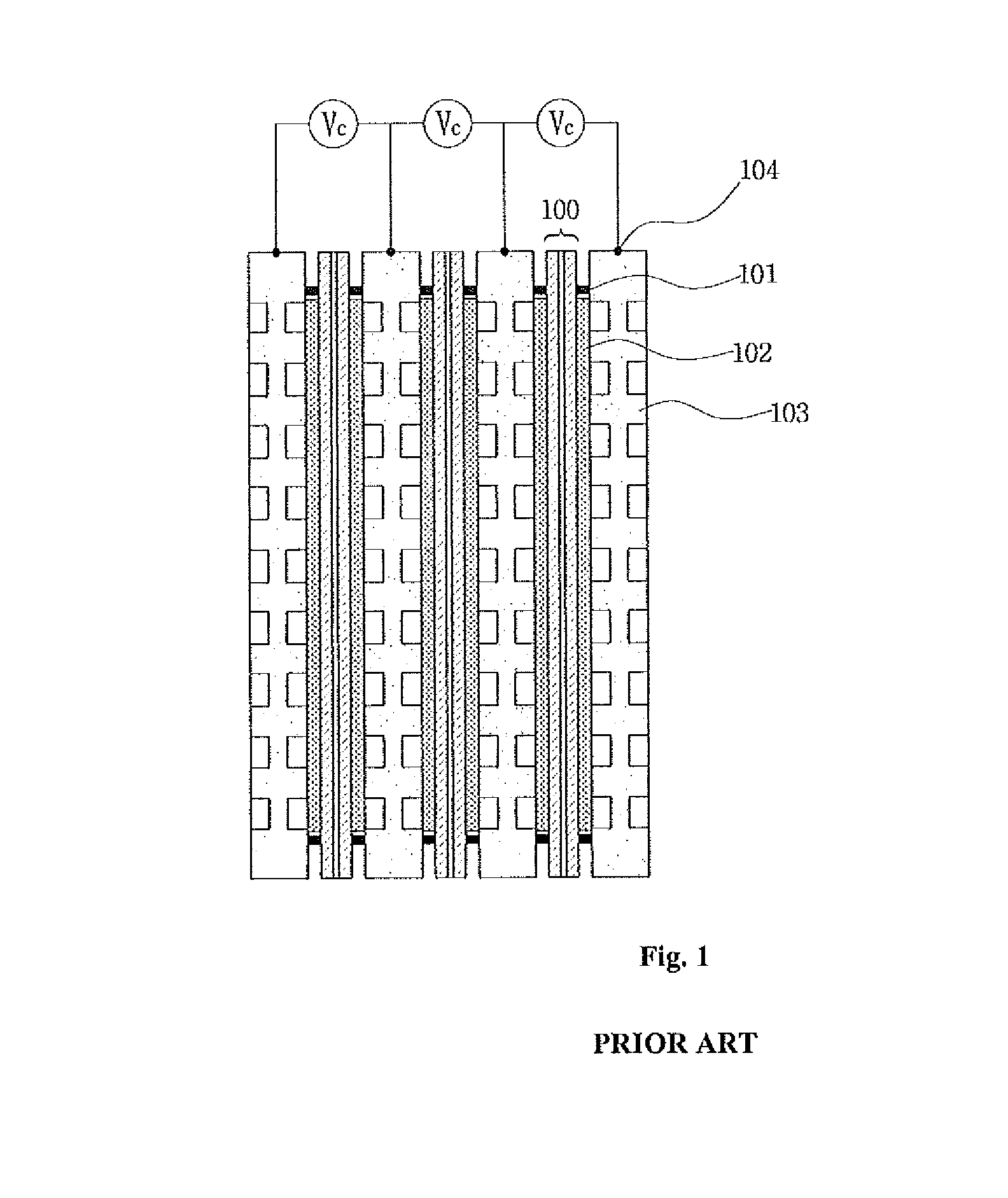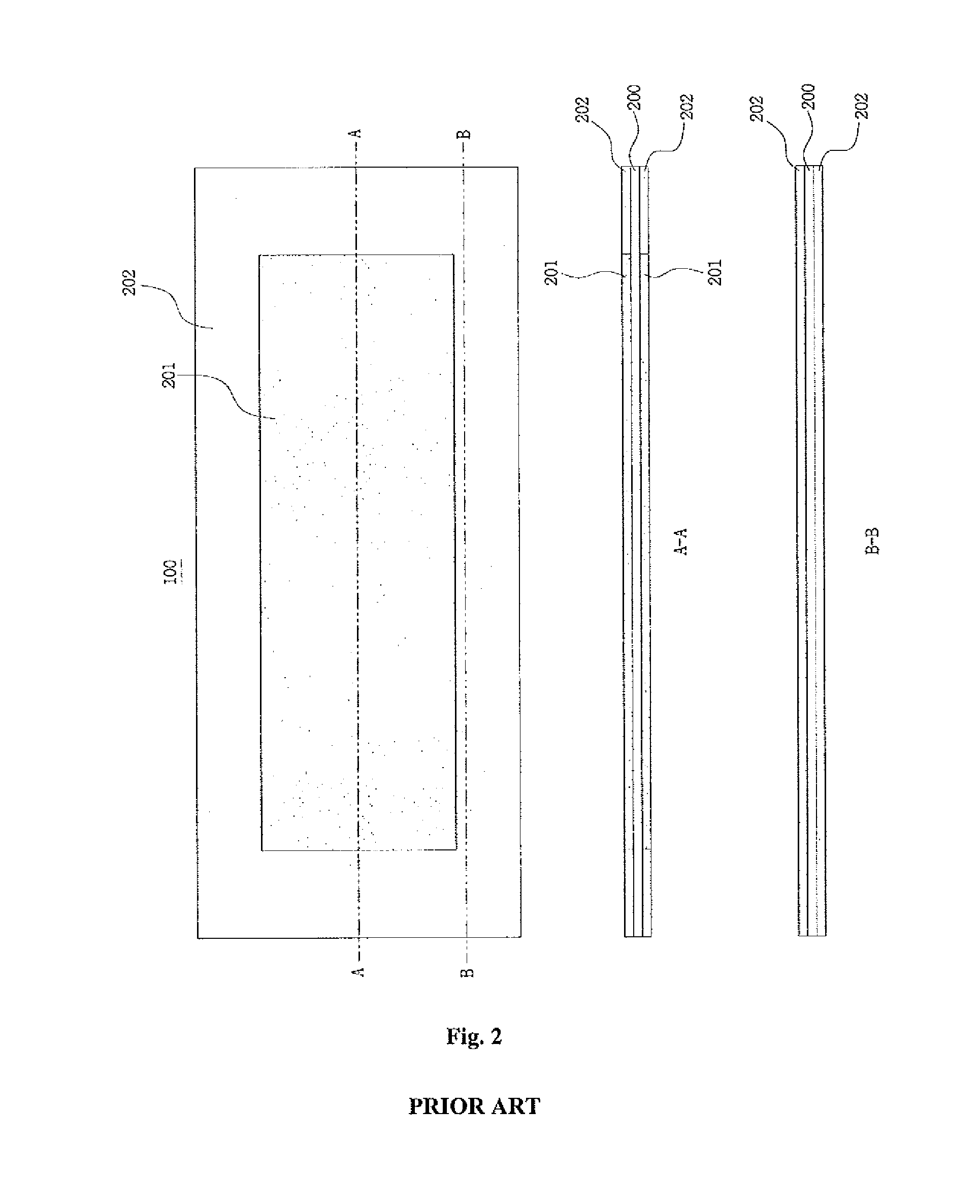Membrane electrode assembly containing flexible printed circuit board formed on ion exchange membrane support film
a flexible printed circuit board and membrane electrode technology, applied in the direction of cell components, cell component details, electrochemical generators, etc., can solve the problems of affecting the mass production rate of fuel cell stacks, damage to separators, and deterioration of contact properties with respect to separators
- Summary
- Abstract
- Description
- Claims
- Application Information
AI Technical Summary
Benefits of technology
Problems solved by technology
Method used
Image
Examples
Embodiment Construction
[0051]Reference will now be made in detail to the preferred embodiment of the present invention, examples of which are illustrated in the drawings attached hereinafter, wherein like reference numerals refer to like elements throughout. The embodiments are described below so as to explain the present invention by referring to the figures.
[0052]FIG. 5 is a plan view illustrating a flexible PCB for an intelligent MEA in accordance with an exemplary embodiment the present invention, and FIG. 6 is a plan view and a cross-sectional view illustrating an intelligent MEA on which the flexible PCB of FIG. 5 is mounted.
[0053]The intelligent MEA in accordance with the present invention includes an ordinary membrane electrode assembly (MEA) 100, in which a catalyst layer 201 is coated on both sides of an ion exchange membrane 200 (or an electrolyte membrane), and a flexible PCB 400 mounted on the MBA 100. Especially, the flexible PCB 400 is characterized in that an electrical heating element 301...
PUM
| Property | Measurement | Unit |
|---|---|---|
| voltage | aaaaa | aaaaa |
| flexible | aaaaa | aaaaa |
| perimeter | aaaaa | aaaaa |
Abstract
Description
Claims
Application Information
 Login to View More
Login to View More - R&D
- Intellectual Property
- Life Sciences
- Materials
- Tech Scout
- Unparalleled Data Quality
- Higher Quality Content
- 60% Fewer Hallucinations
Browse by: Latest US Patents, China's latest patents, Technical Efficacy Thesaurus, Application Domain, Technology Topic, Popular Technical Reports.
© 2025 PatSnap. All rights reserved.Legal|Privacy policy|Modern Slavery Act Transparency Statement|Sitemap|About US| Contact US: help@patsnap.com



